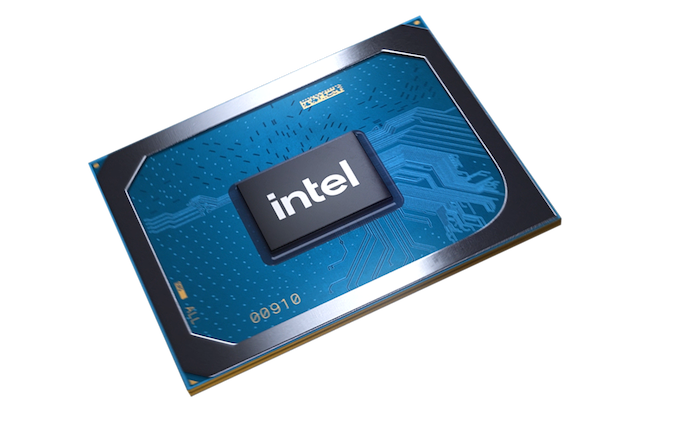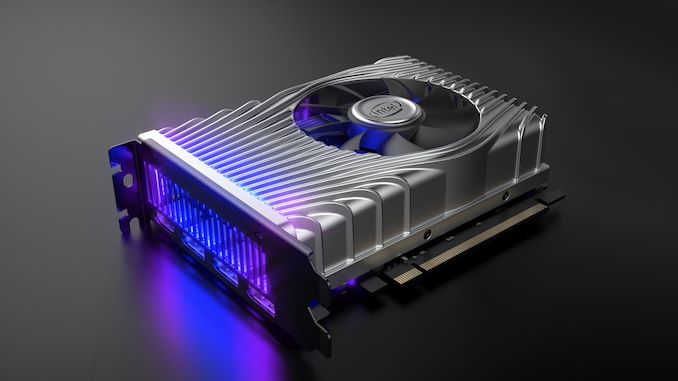Intel’s DG1 GPU Coming to Discrete Desktop Cards Next Year; OEM-Only
by Ryan Smith on October 31, 2020 12:01 PM EST
Alongside today’s launch of Intel’s DG1-based Iris Xe MAX graphics for laptops, the company is also quietly confirming that DG1 will be coming to desktop video cards as well, albeit in a roundabout way.
Though still in the early stages, a hereto unnamed third party has reached an agreement with Intel to produce DG1-based desktop cards. These cards, in turn, will be going into OEM desktop systems, and they are expected to appear early next year.
The very brief statement from Intel doesn’t contain any other details. The company isn’t saying anything about the specifications of the OEM desktop cards (e.g. clockspeeds), nor are they naming the third party that will be making the cards, or any OEMs who might be using the cards. For today at least, this is a simple notification that there will be OEM cards next year.
As for the market for such cards, there are a couple of avenues. OEMs could decide to treat the cards similarly to how Iris Xe MAX is being positioned in laptops, which is to say as a cheap add-in accelerator for certain GPU-powered tasks. Intel has baked a significant amount of video encode performance into the Xe-LP architecture, so the cards could be positioned as video encode accelerators. This would be very similar to Intel’s own plans, as the company will be selling a DG1-based video encode card for servers called the SG1.
Alternatively, the third party may just be looking to sell the DG1 card to OEMs as simple entry-level discrete graphics cards. Based on what we know about Xe MAX for laptops, DG1 is not expected to be significantly more powerful than Tiger Lake integrated graphics. However, as pointed out by our own Dr. Ian Cutress, it should be a good bit better than any comtemporary Atom’s integrated GPU.

Sadly, the OEM card probably won't be as fancy as Intel's DG1 development card










68 Comments
View All Comments
Kjella - Monday, November 2, 2020 - link
Eh, having a separate GPU used to be completely normal. Intel took advantage of AMDs weak high end CPUs offerings to embed a GPU in all mainstream Intel processors starting with Sandy Bridge in 2011 and killed most of that market. So Ryzen is just a return to how it used to be up to 2010 or so.But I suspect that between both Intel and AMD having better integrated offerings and GPUs being much more useful for compute etc. the market for low-end cards is still small. If it's for a business desktop you just send it back for a warranty claim anyway and gamers usually have a bunch of older cards to fill the slot. Pure CPU-heavy tasks that can't be GPU accelerated are becoming rare.
smilingcrow - Monday, November 2, 2020 - link
Let me rephrase and say recreated then.There's a market but as the selling price is low there isn't a large profit so it doesn't get much love.
TheinsanegamerN - Tuesday, November 3, 2020 - link
That started with mobile Nehalem in 2010AntonErtl - Monday, November 2, 2020 - link
Exactly. We put a low-end card into every Ryzen-based server we build. It used to be an AMD R5 230 or HD6450, but supply is low and prices have risen (are they no longer produced?), so we bit the bullet and put an Nvidia 710 in the latest box despite Nvidia's lack of support for free software (fortunately text mode works on the Nvidia card without a proprietary driver). An Intel card would be a welcome entry in this market that AMD has abandoned despite having recreated it.TheinsanegamerN - Tuesday, November 3, 2020 - link
The HD 6000 series has long been out of production, and I believe AMD has cut production of their 200 series many moons ago in favor of APUs. The stock of the cards is likely running out.dotes12 - Tuesday, November 3, 2020 - link
You should be able to find used R5/R7 240 on eBay, but maybe buying used GPUs for production servers isn't a great idea. There's a ton of Dell OEM stuff out there, and they're low profile too.vladx - Saturday, October 31, 2020 - link
Yes it will be very competitive for batch video processing.sing_electric - Saturday, October 31, 2020 - link
Intel can certainly get OEMs to put pretty much anything in a system if they make it worth their while - cf. Lenovo's China-only Cannon Lake laptop that had to ship with a dGPU because their integrated graphics don't work, just so Intel could claim to investors that they were shipping 10nm products.The real question is if Intel can get these in machines based on merit at a price that generates profit, at least on a per-unit basis
nico_mach - Sunday, November 1, 2020 - link
Right, and does having a low end OEM-only dgpu really change anything? Perhaps if it's configured and sold more for AI work? Pre-built desktop are more likely to be built for that than anything else.Spunjji - Monday, November 2, 2020 - link
I'm sure Intel will find a way to incentivize some sales in the meantime.